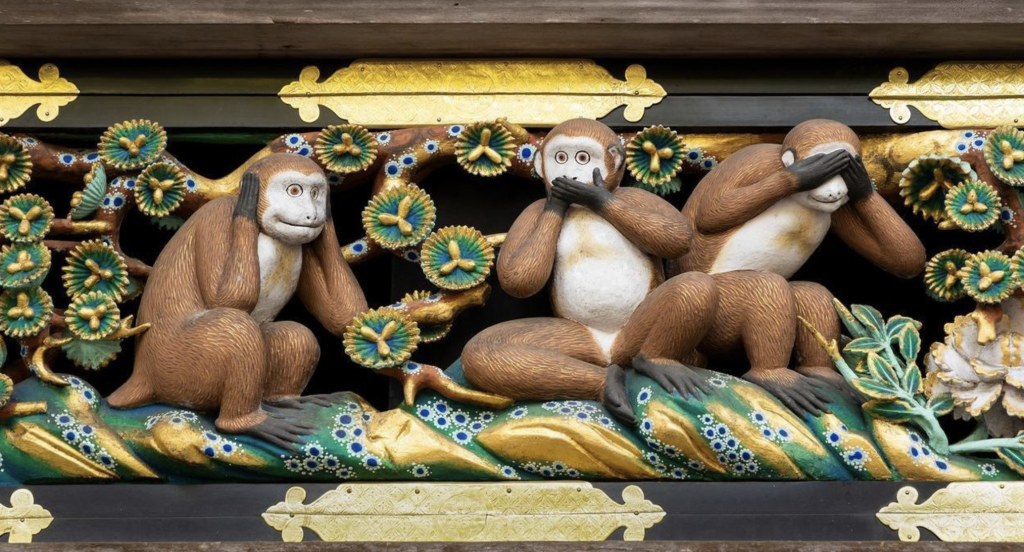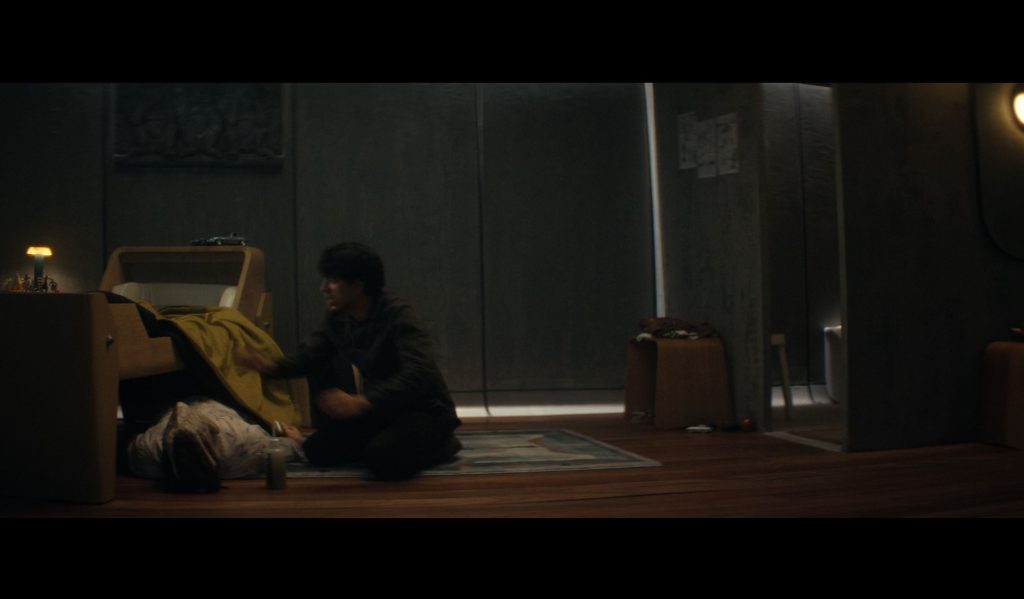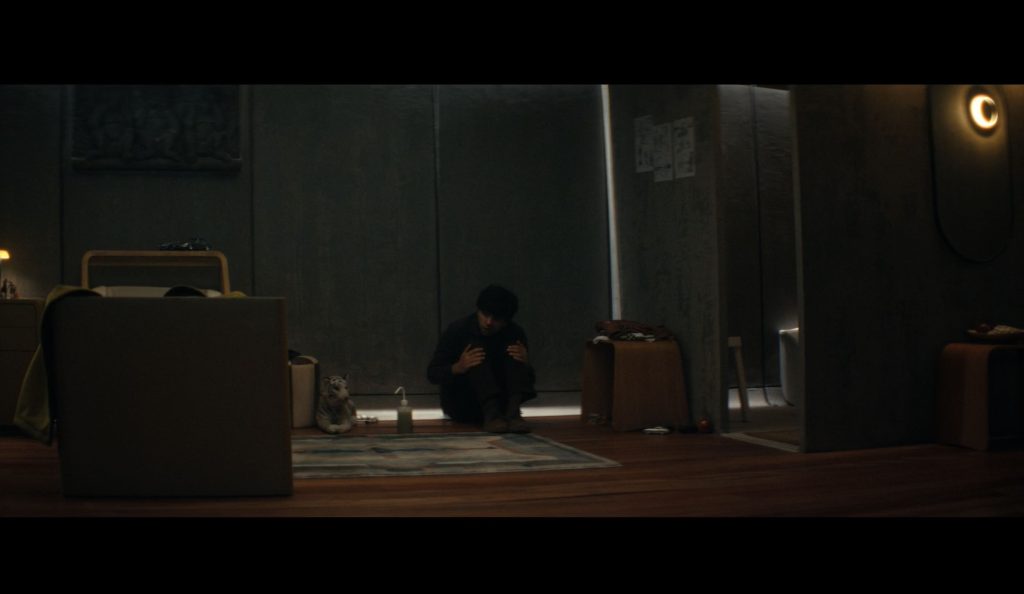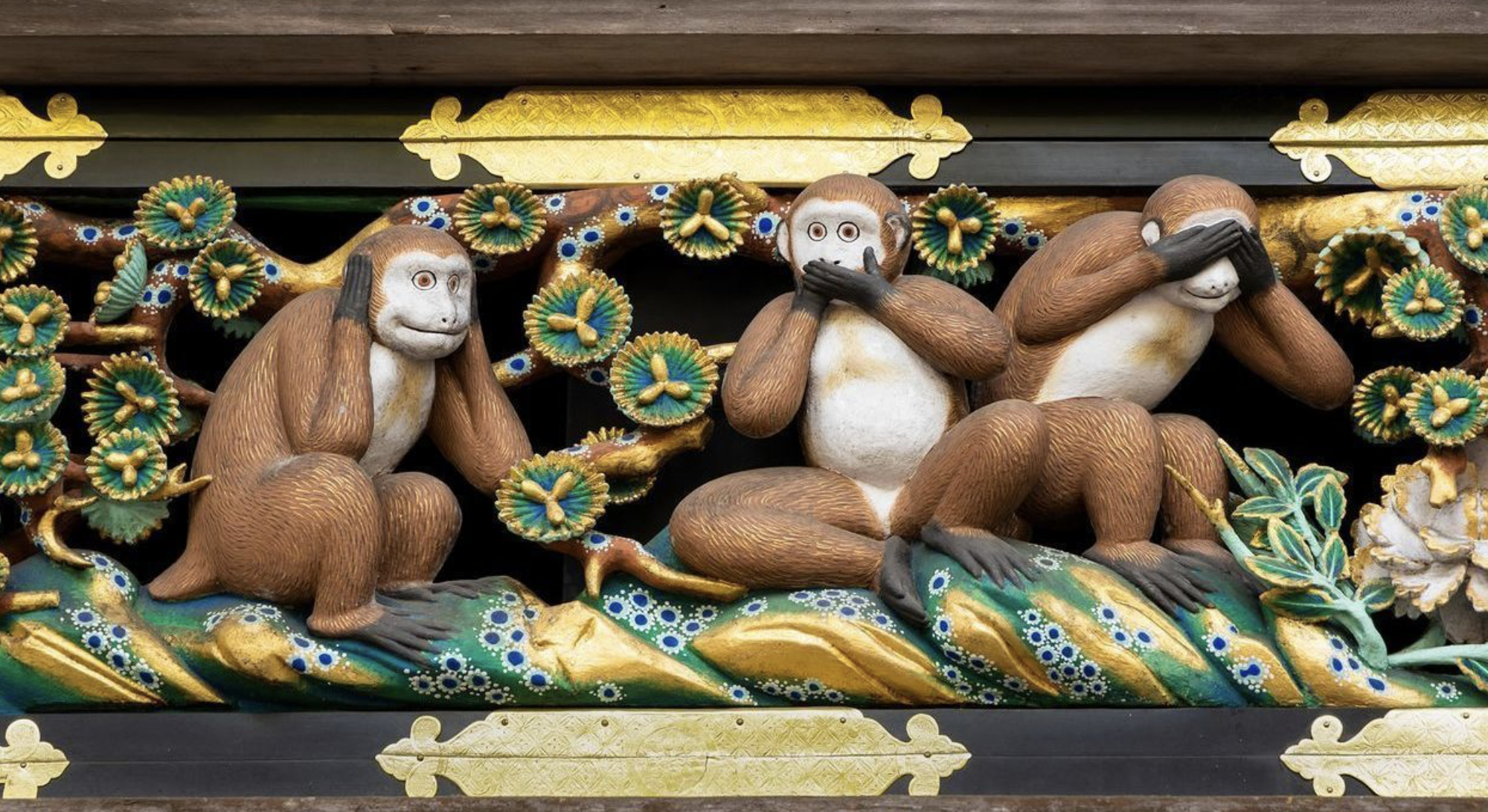The three wise monkeys—see no evil, hear no evil, speak no evil—have travelled from 17th-century Japanese shrines to contemporary streaming television. This post traces their journey, exploring how a moral maxim rooted in Buddhist ethics has become a symbol of complicity, selective perception, and critique of power in shows like Alien: Earth, The White Lotus, and Only Murders in the Building.
The motif of see no evil, hear no evil, speak no evil is one of the most recognizable symbolic triads in global visual culture. Its origins are usually traced to early modern Japan, where in 1617 the sculptor Hidari Jingorō carved the three wise monkeys at the Tōshō-gū shrine in Nikkō. The phrase in Japanese—mizaru, kikazaru, iwazaru—literally means “do not see, do not hear, do not speak.” The pun arises because the suffix -zaru indicates negation while saru also means monkey. The monkeys therefore embody the maxim in a visual and linguistic fusion. The religious background is both Buddhist and Confucian. In Indian sources that travelled along Buddhist transmission routes, there are injunctions to avoid corrupting the senses by guarding sight, hearing, and speech. These were absorbed into Chinese and then Japanese traditions where self-regulation of perception and conduct became moral instruction. The monkeys therefore originally symbolised virtue, discipline, and the refusal to indulge in evil by policing the senses.

Once the motif left its shrine context, its meaning began to migrate and transform. When European travellers encountered the monkeys and reproduced them in prints and decorative arts, they became part of the broader art movement of Japonisme, which captivated Western artists and collectors in the mid-19th century with Japanese aesthetics and symbolism. The monkeys, admired for their compositional clarity and triadic structure, were often reinterpreted to suit European tastes; in Victorian England and later in North America, to “see no evil” no longer signified virtuous self-restraint but deliberate blindness. The phrase became a critique of those who ignored corruption, injustice, or cruelty by pretending not to notice. Detached from their Buddhist ethical origins, the monkeys were recast as symbols of hypocrisy, complicity, and self-preservation—a critical lens on human evasions that persists today.
In contemporary streaming media, the three monkeys have shed any quaint or exotic connotation to become a living, adaptive symbol of denial and selective perception. Science fiction, satire, and crime comedy all engage the motif because these genres are preoccupied with what is seen, heard, and spoken, and with the consequences of turning away. The monkeys now function as a lens through which audiences can examine not only character behaviour but also the structural mechanics of power, privilege, and moral evasion that shape modern narrative worlds.
In Alien: Earth, the narrative stages a civilization dominated by corporate elites whose decisions exert life-or-death consequences with near-total impunity. The refusal to see, hear, or speak operates as a cultivated strategy of wilful ignorance; executives and powerful actors turn away from the human costs of their ambition, masking exploitation and ethical transgression behind layers of procedure and profit. The three monkeys emerge as an ironic emblem of this structural blindness, highlighting how moral abdication is embedded in systems of power. Knowledge and warning exist, yet they are ignored, deferred, or commodified, producing a world in which suffering is visible but systematically unacknowledged. By invoking this ancient motif, the series critiques not only individual denial but also the political and technological mechanisms that enable it, offering a cynical meditation on complicity, control, and the ethics of corporate governance.




In The White Lotus, the satirical lens exposes how privilege enforces selective perception as a form of social power. The wealthy guests and resort operators deliberately ignore the labour, inequality, and suffering that sustain their comfort; to “see no evil, hear no evil, speak no evil” becomes a strategy of moral insulation. The three monkeys here serve as an ironic emblem of systemic blindness, illustrating how performative innocence masks structural exploitation. What began as a religious maxim for ethical self-discipline is transformed into a critique of entitlement and complicity, showing how social and economic hierarchies institutionalize ignorance while allowing moral corruption to proliferate under the guise of civility and leisure.

Comedy offers yet another transformation of the motif in Only Murders in the Building. The trio of amateur detectives should in principle be the antithesis of the monkeys; their task is to observe, listen, and speak. Yet their eccentricity and missteps mean that they often fail to see what is in plain sight, to hear crucial truths, or to articulate findings coherently. The irony lies in the fact that the very structure of the series invites viewers to identify with these failures, to enjoy complicity in the gaps between evidence and interpretation. The comic inflection therefore reveals how the motif can be mobilised not only as critique of blindness but also as a mirror of the audience’s own desire for mediated narratives of crime and justice.

Taken together, these examples demonstrate that the three monkeys remain a powerful semiotic device, capable of registering complicity, denial, and ethical abdication across cultures and media. In Japan they disciplined perception; in the West they became shorthand for deliberate blindness and hypocrisy; in contemporary streaming television they expose the mechanics of privilege, power, and selective attention, showing how systems of wealth, authority, and narrative control facilitate moral evasion. The migration of the motif illustrates how a Buddhist ethical maxim has been transformed into a critical instrument, tracing the enduring intersections of ignorance, responsibility, and spectacle in human society. Perhaps its most urgent lesson today is a return to its original purpose: guarding our senses against the constant onslaught of information, opinion, and moral distraction in the age of social media.


